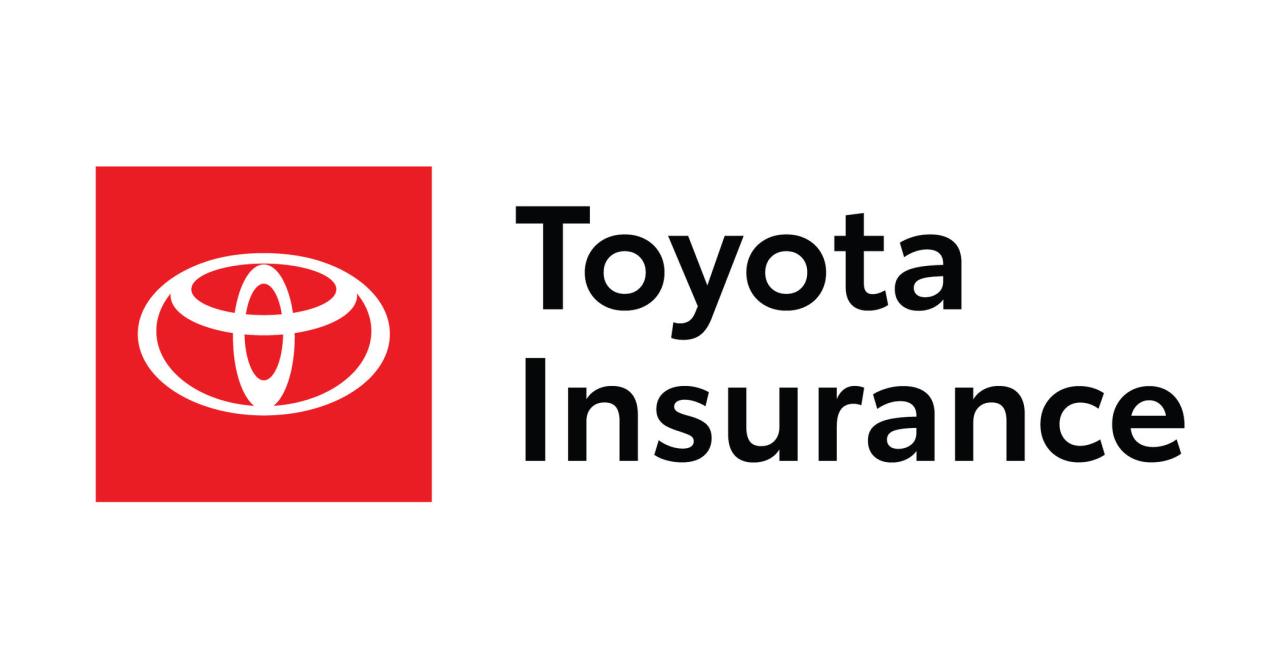In the world of insurance, where risk assessment and coverage are paramount, a distinct approach has emerged: selective insurance. This specialized form of insurance, often associated with underwriting rigor and tailored solutions, has become increasingly prevalent in various industries, offering both insurers and policyholders a unique set of benefits.
Selective insurance deviates from traditional models by employing a more discerning approach to policyholder selection. Insurers meticulously evaluate potential clients based on a comprehensive range of factors, including risk profiles, historical data, and specific needs. This meticulous process aims to create a portfolio of low-risk individuals and businesses, ultimately leading to improved profitability and enhanced financial stability for the insurer.
Selective Insurance
Selective insurance is a specialized form of insurance that focuses on underwriting and insuring specific, often high-risk, segments of the insurance market. Unlike traditional insurance companies that offer a broad range of policies to a wider audience, selective insurers specialize in providing coverage for specific industries, professions, or even individuals with unique risk profiles.
Purpose of Selective Insurance
Selective insurance aims to provide tailored insurance solutions to specific needs, often involving higher risk exposures or specialized requirements. By focusing on a niche market, selective insurers can leverage their expertise and resources to develop customized policies and risk management strategies that meet the unique demands of their target audience.
History of Selective Insurance
The concept of selective insurance has evolved alongside the insurance industry itself. Early forms of selective insurance can be traced back to the 18th and 19th centuries, with the rise of specialized insurance companies catering to specific industries, such as marine insurance or fire insurance.
Examples of Industries Where Selective Insurance is Commonly Used
Selective insurance is widely used across various industries, with some prominent examples including:
- Professional Liability Insurance: This type of insurance protects professionals, such as doctors, lawyers, and accountants, against claims arising from errors, omissions, or negligence in their professional practice.
- Cybersecurity Insurance: As cyber threats continue to grow, cybersecurity insurance has become increasingly important for businesses of all sizes. Selective insurers offer specialized policies that cover data breaches, ransomware attacks, and other cyber-related incidents.
- High-Net-Worth Insurance: Individuals with significant wealth and assets often require tailored insurance solutions that cater to their unique needs. Selective insurers offer specialized policies for high-net-worth individuals, covering their homes, art collections, and other valuable possessions.
Key Features of Selective Insurance
Selective Insurance is a property and casualty insurance company known for its specialized underwriting approach and focus on niche markets. It distinguishes itself from traditional insurers by employing a more selective and risk-averse approach to policy issuance, emphasizing careful assessment and a tailored approach to risk management.
Underwriting Process and Risk Assessment
Selective Insurance’s underwriting process is a key differentiator, emphasizing a thorough evaluation of potential policyholders and their specific risks. This process goes beyond traditional underwriting methods, delving deeper into individual circumstances and risk profiles. The company leverages advanced data analytics and proprietary risk models to assess the likelihood of claims and determine appropriate coverage and pricing. This approach allows Selective Insurance to identify and underwrite policies for clients with unique needs and risk profiles, often underserved by traditional insurance providers.
Criteria for Selecting Policyholders
Selective Insurance’s underwriting process focuses on a range of criteria, including:
- Industry Expertise: Selective Insurance has specialized expertise in specific industries, such as construction, manufacturing, and healthcare. This allows them to understand the unique risks associated with these sectors and develop tailored insurance solutions.
- Risk Management Practices: The company prioritizes policyholders with strong risk management practices, such as robust safety protocols and proactive loss prevention measures. This reduces the likelihood of claims and helps to ensure a stable portfolio.
- Financial Stability: Selective Insurance carefully assesses the financial stability of potential policyholders, ensuring they have the resources to manage potential risks and fulfill their insurance obligations.
- Claims History: The company reviews the claims history of potential policyholders, considering the frequency and severity of past claims. This provides insights into the likelihood of future claims and helps to determine appropriate coverage levels.
Benefits of Selective Insurance for Insurers
Selective insurance, a strategy that focuses on carefully choosing and underwriting policies with low risk profiles, offers significant advantages for insurers, enabling them to manage risk effectively, enhance profitability, and improve financial stability. By strategically selecting policies, insurers can minimize potential losses, optimize resource allocation, and ultimately achieve sustainable growth.
Potential for Higher Profitability
Selective insurance can significantly contribute to higher profitability for insurers. By focusing on low-risk policies, insurers reduce the likelihood of claims and associated payouts, leading to a more favorable loss ratio. This, in turn, translates into higher underwriting profits, a key indicator of an insurer’s financial performance.
The loss ratio, calculated as the ratio of incurred losses to earned premiums, is a crucial metric for insurers. A lower loss ratio indicates that the insurer is paying out less in claims relative to the premiums collected.
Moreover, selective insurance allows insurers to allocate resources more effectively. By concentrating on policies with lower risk profiles, insurers can optimize their underwriting and claims handling processes, reducing operational costs and improving efficiency.
Impact on Underwriting Costs and Claims Payouts
Selective insurance can significantly impact underwriting costs and claims payouts, positively affecting an insurer’s bottom line. By targeting low-risk policies, insurers can reduce the time and effort required for underwriting, as the assessment process is often simpler for less risky applicants. This leads to lower underwriting costs, freeing up resources for other areas of the business.
Furthermore, selective insurance can significantly reduce claims payouts. By focusing on policies with lower risk profiles, insurers minimize the likelihood of claims and the severity of potential losses. This can lead to a lower claims frequency and lower average claim payouts, resulting in significant cost savings for the insurer.
For example, an insurer specializing in insuring vehicles with safety features and a proven history of safe driving may experience significantly lower claims payouts compared to an insurer offering coverage to a broader range of drivers and vehicles.
Benefits of Selective Insurance for Policyholders
Selective insurance, also known as risk-based insurance, offers a tailored approach to insurance coverage, providing potential advantages for both individuals and businesses. This approach can lead to lower premiums and more favorable coverage terms by carefully assessing the specific risks associated with each policyholder.
Lower Premiums
Selective insurance often results in lower premiums for policyholders who demonstrate lower risk profiles. This is because insurers can more accurately assess the likelihood of claims based on individual circumstances. For example, a driver with a clean driving record and a safe vehicle may qualify for a lower premium than a driver with a history of accidents or a high-performance car.
More Favorable Coverage
Selective insurance allows insurers to customize coverage based on the unique needs of each policyholder. This can lead to more comprehensive and relevant protection, ensuring that individuals and businesses are adequately covered for the specific risks they face. For instance, a business operating in a high-risk industry may benefit from additional coverage for liability and property damage, while a homeowner with a low-risk property might receive a discounted premium for basic coverage.
Personalized Insurance Solutions
Selective insurance enables insurers to develop personalized insurance solutions that cater to the specific requirements of each policyholder. This approach ensures that individuals and businesses receive the appropriate level of coverage and risk management strategies tailored to their unique circumstances.
Types of Selective Insurance

Selective insurance is a specialized form of insurance that caters to specific needs and risks. It differs from traditional insurance in its focus on a particular segment of the market, offering tailored coverage and risk management solutions. This approach allows insurers to provide more comprehensive and cost-effective protection for their clients.
Types of Selective Insurance
Selective insurance encompasses a broad spectrum of insurance products, each designed to address specific risks and needs. These types include:
- Professional Liability Insurance (E&O): This insurance protects professionals from financial losses arising from errors, omissions, or negligence in their work. It is crucial for professionals such as doctors, lawyers, accountants, and architects, who face significant risks in their practice.
- Cybersecurity Insurance: This type of insurance protects businesses from financial losses due to cyberattacks, data breaches, and other cyber risks. It covers expenses such as data recovery, legal fees, and regulatory fines.
- Directors & Officers (D&O) Liability Insurance: D&O insurance protects directors and officers of companies from personal liability for wrongful acts committed in their official capacity. This coverage is essential for safeguarding the personal assets of corporate leaders.
- Workers’ Compensation Insurance: This insurance protects employers from financial losses arising from workplace injuries or illnesses. It covers medical expenses, lost wages, and rehabilitation costs for employees.
- Specialty Insurance: This category encompasses various niche insurance products that address unique risks in specific industries. Examples include marine insurance, aviation insurance, and energy insurance.
Features and Benefits of Selective Insurance
Selective insurance offers several key features and benefits that distinguish it from traditional insurance:
- Tailored Coverage: Selective insurance policies are customized to meet the specific needs of individual clients, providing comprehensive protection against specific risks.
- Risk Management Expertise: Insurers specializing in selective insurance possess in-depth knowledge and expertise in managing specific risks, enabling them to offer tailored solutions.
- Competitive Pricing: By focusing on specific risk segments, selective insurance providers can offer competitive pricing, reflecting the lower risk associated with their target market.
- Enhanced Claims Handling: Selective insurance companies often have dedicated teams and resources to handle claims efficiently and effectively, ensuring a smooth claims process for policyholders.
- Proactive Risk Mitigation: Selective insurers often provide risk management services and resources to help clients proactively mitigate potential risks, reducing the likelihood of claims.
Comparison of Selective Insurance Options
| Type of Selective Insurance | Key Features | Benefits |
|—|—|—|
| Professional Liability Insurance (E&O) | Protects professionals from errors, omissions, or negligence in their work. | Covers legal fees, settlements, and judgments. |
| Cybersecurity Insurance | Protects businesses from cyberattacks, data breaches, and other cyber risks. | Covers data recovery, legal fees, and regulatory fines. |
| Directors & Officers (D&O) Liability Insurance | Protects directors and officers of companies from personal liability for wrongful acts. | Safeguards personal assets of corporate leaders. |
| Workers’ Compensation Insurance | Protects employers from financial losses arising from workplace injuries or illnesses. | Covers medical expenses, lost wages, and rehabilitation costs for employees. |
| Specialty Insurance | Addresses unique risks in specific industries. | Offers customized coverage and risk management solutions. |
Ethical Considerations in Selective Insurance
Selective insurance, while offering benefits to both insurers and policyholders, raises ethical concerns that require careful consideration. The practice of selecting low-risk individuals for coverage while excluding those deemed higher risk can create disparities in access to insurance and perpetuate existing inequalities.
Impact on Access to Insurance for Underserved Populations
Selective insurance practices can disproportionately impact underserved populations, such as those with pre-existing health conditions, lower socioeconomic status, or residing in high-risk areas. This can lead to a situation where individuals with greater needs are denied coverage or charged exorbitant premiums, further exacerbating their vulnerability.
“Selective insurance practices can perpetuate existing inequalities by limiting access to insurance for those who need it most.”
Strategies for Ensuring Fairness and Transparency in Underwriting Decisions
To mitigate the ethical concerns associated with selective insurance, several strategies can be implemented:
- Develop objective underwriting criteria: Insurers should strive to use objective and transparent criteria in their underwriting decisions, avoiding subjective biases that could unfairly disadvantage certain groups. This can involve incorporating factors like socioeconomic indicators, geographic location, and health status into the assessment process, but with careful consideration to avoid discriminatory practices.
- Promote transparency and accountability: Insurers should be transparent about their underwriting practices and provide clear explanations to individuals who are denied coverage or offered higher premiums. This fosters trust and accountability, enabling individuals to understand the reasons behind the decisions and challenge them if necessary.
- Consider alternative risk-sharing mechanisms: Exploring alternative risk-sharing mechanisms, such as community rating or government-backed programs, can help spread risk more equitably and ensure access to insurance for underserved populations. These mechanisms can help mitigate the financial burden on individuals and promote a more inclusive insurance market.
The Future of Selective Insurance

The selective insurance market is poised for significant transformation, driven by technological advancements, evolving risk profiles, and a growing demand for customized solutions. The future of selective insurance will be shaped by a convergence of data analytics, artificial intelligence, and personalized risk assessment, leading to more precise and efficient insurance products and services.
The Impact of Technological Advancements
Technological advancements are playing a pivotal role in reshaping the selective insurance landscape. Data analytics and artificial intelligence (AI) are revolutionizing risk assessment and underwriting processes, enabling insurers to develop more sophisticated and accurate risk models.
- Data Analytics: Data analytics enables insurers to leverage vast amounts of data to identify patterns and predict future outcomes. This allows for more precise risk assessments, leading to more accurate pricing and underwriting decisions. By analyzing historical data, insurers can gain insights into factors that influence risk, such as driving habits, health records, and property characteristics. This allows them to develop more targeted and customized insurance products for specific risk profiles.
- Artificial Intelligence: AI algorithms are transforming the underwriting process by automating tasks such as data analysis, fraud detection, and claims processing. AI-powered systems can analyze large datasets, identify potential risks, and make recommendations based on predefined criteria. This enables insurers to streamline their operations, improve efficiency, and reduce costs. Additionally, AI can assist in developing more sophisticated risk models that account for a wider range of factors, leading to more accurate and equitable pricing.
The Role of Data Analytics and Artificial Intelligence
Data analytics and AI are playing a crucial role in shaping the future of selective insurance. By leveraging these technologies, insurers can gain a deeper understanding of risk, personalize their offerings, and improve their operational efficiency.
- Personalized Risk Assessment: Data analytics and AI enable insurers to develop more personalized risk assessments by analyzing individual data points. This allows for more accurate pricing and underwriting decisions, ensuring that policyholders are paying premiums that reflect their actual risk. For example, insurers can use data from wearable devices to assess the health risks of individuals, allowing them to offer customized health insurance plans.
- Enhanced Risk Management: AI-powered risk management systems can analyze data from various sources, such as social media, weather patterns, and satellite imagery, to identify potential risks and vulnerabilities. This allows insurers to proactively manage risks, reduce claims costs, and improve customer satisfaction. For example, insurers can use AI to identify areas prone to natural disasters and adjust their insurance offerings accordingly.
- Improved Customer Experience: Data analytics and AI can be used to personalize the customer experience, providing tailored insurance solutions and seamless interactions. For example, chatbots can be used to answer customer queries, while AI-powered recommendation engines can suggest relevant insurance products based on individual needs and preferences.
Case Studies of Selective Insurance in Action
Selective insurance, a strategy that tailors insurance coverage to specific individuals or groups based on their risk profiles, has gained traction in recent years. By focusing on specific risk segments, insurers can optimize pricing, coverage, and risk management practices. This approach offers potential benefits for both insurers and policyholders.
Real-World Examples of Successful Selective Insurance Programs
The success of selective insurance programs hinges on identifying and targeting specific risk segments effectively. Here are examples of successful selective insurance programs:
- Health Insurance for High-Risk Individuals: In the healthcare sector, insurers have implemented selective insurance programs for individuals with pre-existing conditions. By offering tailored coverage and managing risk through preventive care programs, these programs have helped insurers provide affordable coverage while managing costs effectively. For instance, a health insurer may offer a program specifically for individuals with diabetes, providing access to specialized care, medication management, and health education resources.
- Cybersecurity Insurance for Small Businesses: The increasing threat of cyberattacks has prompted insurers to develop selective insurance programs for small businesses. These programs offer customized coverage tailored to the specific cybersecurity needs of different businesses, considering factors such as industry, revenue, and technology infrastructure. By offering targeted coverage and risk mitigation services, these programs have helped insurers protect small businesses from the financial fallout of cyberattacks.
Benefits and Challenges of Implementing Selective Insurance
Implementing selective insurance programs involves both potential benefits and challenges.
- Benefits:
- Improved Risk Management: Selective insurance programs allow insurers to better assess and manage risk by focusing on specific risk segments. This can lead to more accurate pricing and coverage, reducing the likelihood of adverse selection.
- Enhanced Customer Experience: By tailoring coverage to specific needs, selective insurance programs can provide a more personalized and relevant customer experience. This can lead to increased customer satisfaction and loyalty.
- Increased Profitability: By focusing on specific risk segments, insurers can optimize their pricing and coverage strategies, potentially leading to increased profitability.
- Challenges:
- Data Collection and Analysis: Implementing selective insurance programs requires extensive data collection and analysis to accurately identify and segment risk profiles. This can be a complex and resource-intensive process.
- Potential for Discrimination: There is a risk that selective insurance programs could lead to discrimination if not carefully designed and implemented. Insurers must ensure that their programs are fair and equitable and do not unfairly exclude certain individuals or groups.
- Regulatory Compliance: Selective insurance programs may be subject to regulatory scrutiny. Insurers must ensure that their programs comply with all applicable laws and regulations.
Key Takeaways from Case Studies
| Case Study | Key Takeaway |
|---|---|
| Health Insurance for High-Risk Individuals | Selective insurance programs can effectively manage risk and provide affordable coverage for individuals with pre-existing conditions by offering tailored coverage and risk mitigation services. |
| Cybersecurity Insurance for Small Businesses | Selective insurance programs can help small businesses protect themselves from cyberattacks by providing customized coverage and risk mitigation services tailored to their specific needs. |
Comparative Analysis of Selective vs. Traditional Insurance
Selective insurance, a relatively new approach to risk management, offers a stark contrast to the traditional insurance models. This approach, characterized by its focus on specific risks and tailored coverage, presents both opportunities and challenges for insurers and policyholders alike. By comparing and contrasting selective insurance with traditional insurance, we can gain a deeper understanding of the benefits, drawbacks, and potential applications of each approach.
Risk Management Strategies
Selective insurance, unlike traditional insurance, focuses on identifying and managing specific risks. This allows insurers to develop tailored coverage solutions that are more relevant to the individual needs of policyholders. In contrast, traditional insurance models often offer standardized coverage packages that may not fully address the unique risks faced by certain individuals or businesses.
Cost and Coverage
The cost of selective insurance can vary significantly depending on the specific risks being covered. However, in many cases, selective insurance can be more cost-effective than traditional insurance, as it eliminates the need for broad coverage that may not be relevant to the insured. On the other hand, traditional insurance typically offers a wider range of coverage options, but at a higher cost.
Benefits for Insurers
Selective insurance can offer several benefits to insurers, including:
- Increased profitability through reduced risk exposure.
- Improved risk management through specialized underwriting and pricing strategies.
- Enhanced customer satisfaction through personalized coverage solutions.
Benefits for Policyholders
Selective insurance can also benefit policyholders, offering:
- Lower premiums by eliminating unnecessary coverage.
- More relevant coverage tailored to specific needs and risks.
- Improved risk management through customized risk assessment and mitigation strategies.
Types of Selective Insurance
Selective insurance can be applied to a wide range of insurance products, including:
- Cybersecurity Insurance: This type of insurance specifically covers losses related to cyberattacks, data breaches, and other digital risks.
- Specialty Insurance: This category encompasses insurance products designed for specific industries, such as construction, energy, or technology.
- High-Net-Worth Insurance: This type of insurance caters to individuals with significant assets, offering specialized coverage for unique risks associated with wealth.
Visual Representation
A visual representation of the key differences between selective and traditional insurance could include a chart or infographic depicting:
- Risk Coverage: Traditional insurance offers broad coverage for a wide range of risks, while selective insurance focuses on specific risks identified by the policyholder.
- Cost: Traditional insurance typically has higher premiums due to the wider coverage, while selective insurance can be more cost-effective by focusing on specific risks.
- Customization: Traditional insurance offers limited customization options, while selective insurance allows for tailored coverage solutions based on individual needs.
Industry Perspectives on Selective Insurance

Selective insurance, a specialized form of insurance that targets specific segments of the market with tailored coverage and risk management solutions, has garnered significant attention within the insurance industry. This approach, which prioritizes underwriting and risk assessment, offers a unique perspective on risk management and insurance product development.
Perspectives from Insurance Professionals
Insurance professionals view selective insurance as a valuable tool for addressing the evolving needs of the insurance market. They highlight its ability to provide tailored coverage, optimize risk management strategies, and improve profitability.
- Many insurance professionals believe that selective insurance offers a more targeted and efficient approach to risk management. By focusing on specific segments, insurers can better understand and manage the risks associated with those groups, leading to more accurate pricing and risk assessment.
- The ability to tailor insurance products to specific needs is another key advantage of selective insurance. This approach allows insurers to develop coverage options that are more relevant and appealing to specific customer segments, enhancing customer satisfaction and loyalty.
- Selective insurance also enables insurers to leverage data analytics and predictive modeling to refine risk assessment and pricing strategies. This data-driven approach allows insurers to identify and manage risk more effectively, leading to improved underwriting decisions and profitability.
Insights from Industry Experts
Industry experts offer valuable insights into the current state and future of selective insurance. They emphasize the growing importance of data analytics, the need for innovation in product development, and the potential for selective insurance to play a significant role in addressing emerging risks.
- Industry experts predict that the use of data analytics and artificial intelligence (AI) will become increasingly important in selective insurance. By leveraging these technologies, insurers can further refine risk assessment, personalize coverage options, and enhance the customer experience.
- Experts also highlight the need for innovation in product development. As the insurance landscape continues to evolve, insurers will need to develop new and innovative products that meet the changing needs of customers. Selective insurance provides a framework for developing tailored solutions that address specific risk profiles and customer preferences.
- Industry experts believe that selective insurance has the potential to play a critical role in addressing emerging risks, such as those associated with climate change, cyber security, and technological advancements. By focusing on specific segments and developing tailored solutions, insurers can better manage these risks and provide the necessary coverage to protect their customers.
“Selective insurance is not just a niche market; it is the future of insurance. By focusing on specific segments and leveraging data and technology, insurers can better manage risk, provide tailored solutions, and create a more sustainable and profitable business model.” – [Prominent Industry Figure Name], CEO of [Company Name]
Final Review

Selective insurance represents a dynamic shift in the insurance landscape, presenting a compelling alternative for both insurers and policyholders. As technological advancements continue to reshape risk assessment and underwriting, selective insurance is poised to play an increasingly prominent role in shaping the future of the industry. By embracing data-driven insights and personalized solutions, selective insurance has the potential to enhance risk management, foster financial stability, and deliver tailored coverage options that cater to the unique needs of individuals and businesses alike.

